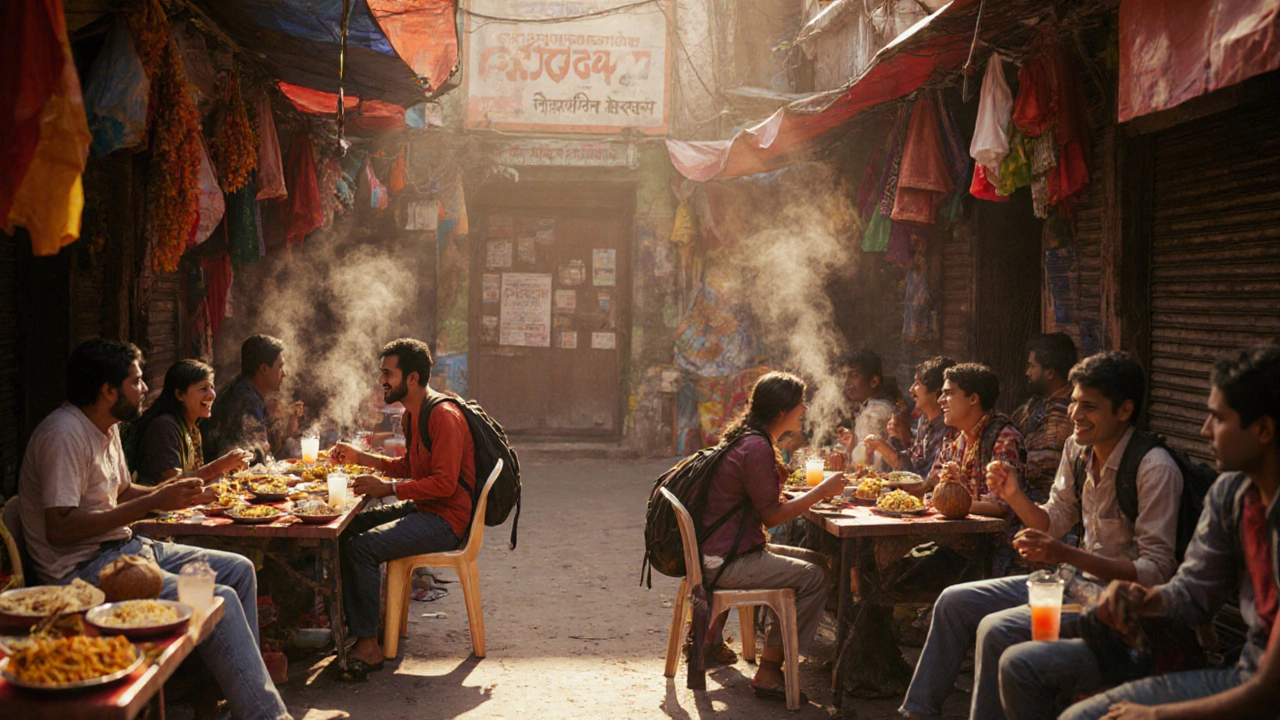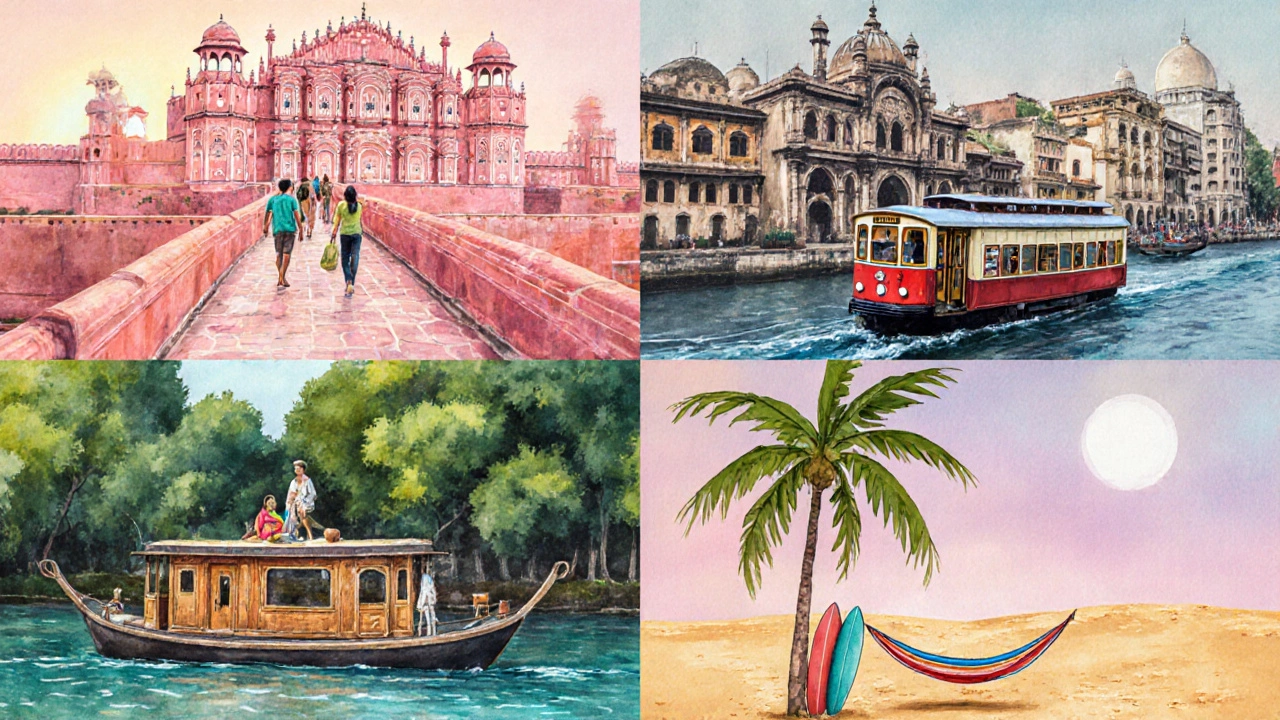Is India Still a Budget Destination in 2025?
 Oct, 12 2025
Oct, 12 2025
India Budget Calculator
Calculate Your Daily Budget in India
Based on 2025 data from the article "Is India Still a Budget Destination in 2025?"
Your estimated daily budget:
$0.00
Pro Tip: Traveling during off-peak season can save you 30-40% on accommodations and transport.
Travelers keep asking whether India still offers a wallet‑friendly experience for backpackers and family vacationers alike. The answer isn’t a simple yes or no - it depends on where you go, when you travel, and how you plan each day. In 2025 the country’s price map has shifted a bit, but there are still plenty of pockets where a daily budget of $30‑$50 can cover food, sleep and transport.
How Much Does a Trip to India Cost Today?
Let’s break the numbers down by the three biggest expense buckets: accommodation, meals, and getting around.
- Accommodation: Hostels in major cities run $8‑$15 per night for a bunk in a shared dorm. Hostels are the most common budget option for solo travelers and groups. Mid‑range hotels cost $30‑$60, while boutique stays can exceed $100.
- Food: Street‑food stalls serve a plate of masala dosa for $2‑$3, a bowl of spicy ramen‑style noodles for $1.50, and a fresh coconut water for under $1. Street food offers the best calories‑for‑dollar ratio in the country. A three‑course meal at a mid‑level restaurant averages $7‑$12.
- Transport: Intercity trains range $5‑$25 depending on class and distance. Budget airlines such as IndiGo operate a dense network of domestic flights at $30‑$80 per leg. City buses and metro systems cost under $1 per ride.
Putting those figures together, a solo traveler can comfortably live on $35‑$45 per day in most regions, while families or those wanting a few comforts should budget $60‑$80.
What Has Changed Since 2020?
Several macro factors have nudged prices upward:
- Inflation: The Indian rupee’s purchasing power fell about 12% from 2020 to 2025, according to the Reserve Bank’s inflation report.
- Tourism recovery: Post‑pandemic visitor numbers are back to pre‑COVID levels, prompting hotels to raise rates during peak seasons.
- Fuel costs: Higher diesel prices have increased bus and taxi fares by roughly 8%.
Despite those shifts, the country’s baseline remains low compared with neighboring Southeast Asian destinations. For example, Vietnam’s average daily budget sits around $45‑$60, while Thailand hovers near $55‑$70.

Where to Find the Best Value
Not every Indian city is created equal on the price‑scale. Below is a quick guide to the regions that still deliver big experiences for tiny budgets.
- North‑west: Jaipur offers heritage hotels and street markets at $10‑$20 per night. The pink city’s forts are free or charge a nominal entry fee.
- East Coast: Kolkata is famous for cheap kebabs, tram rides and colonial architecture. Meals stay under $3, and guesthouses cost $7‑$12.
- South: Kerala provides back‑water homestays for $15‑$25, plus affordable coconut‑based cuisine. The state’s public transport is reliable and cheap.
- Western coast: Goa still has beachside hostels at $12‑$18, especially outside the December‑January peak. Eating at local shacks keeps costs low.
Major metros like Delhi are more expensive, but you can still find budget lodging at $10‑$15 and delicious dal‑based meals for $2‑$3.
Average Daily Costs by City (2025 vs 2020)
| City | 2025 (USD) | 2020 (USD) | Change |
|---|---|---|---|
| Delhi | 45 | 38 | +18% |
| Mumbai | 48 | 40 | +20% |
| Jaipur | 33 | 27 | +22% |
| Goa | 38 | 30 | +27% |
| Kerala (Cochin) | 35 | 28 | +25% |
Even with the uptick, the numbers stay comfortably under the $50‑day threshold for most travelers.
Tips to Stretch Your Rupee Further
Here are proven tricks that keep the budget tight without sacrificing fun:
- Travel off‑season: Prices drop 30‑40% in monsoon months (June‑September) for most hotels and flights.
- Use rail passes: The Indian Railways’ “Super Saver” pass offers 30% off on long‑distance tickets when booked two months ahead.
- Eat where locals eat: Stick to dhabas and chaats stalls; a thali costs $2‑$4 and fills you up.
- Book accommodation via local platforms: Sites like OYO and Airbnb’s “Instant Book” often have lower fees than global OTAs.
- Negotiate: In markets and for tuk‑tuk rides, a quick haggling session can shave $0.50‑$1 off the price.
Don’t forget to watch the Indian rupee exchange rates, which can swing 2‑3% in a week. Using a no‑fee card or a reputable currency app can save you extra bucks.
Is India Still Cheap for Different Types of Travelers?
Below is a quick match‑up of traveler profiles and where they can stay under budget.
- Backpackers: Hostels in Delhi, Jaipur, and Goa keep nightly costs under $15. Night buses and shared rides cut intercity travel to $5‑$10.
- Family vacationers: Choose homestays in Kerala or Karnataka; they offer private rooms with meals for $30‑$45 per night.
- Digital nomads: Co‑working spaces in Bangalore and Hyderabad charge $120‑$180 per month, while nearby apartments cost $250‑$400.
- Luxury seekers: Even five‑star resorts in Goa now have off‑season packages at $120‑$150 per night, still lower than many Western destinations.
The takeaway? Yes, India remains a cheap destination, but the definition of “cheap” now leans toward $30‑$50 per day for the typical solo traveler.
Frequently Asked Questions
How much does a budget traveler need per day in India?
A realistic daily budget sits between $35 and $45 if you stay in hostels, eat street food, and use public transport. Add $10‑$15 for occasional entry fees or occasional splurges.
Is the Indian rupee favourable for tourists right now?
As of October2025 the rupee trades around 1USD=83INR, which is slightly weaker than in 2020. This gives foreign travelers a marginally better buying power, especially when using cards with no foreign‑transaction fees.
Which Indian cities are cheapest for accommodation?
Jaipur, Kolkata, and smaller towns in Kerala (such as Varkala) consistently offer dorm beds under $12. Even in tourist hotspots like Goa, you can find beachfront hostels for $15‑$18 outside the peak winter months.
Do budget airlines make India more expensive?
Budget carriers like IndiGo keep short‑haul fares low, but the real savings come from booking early and traveling during off‑peak periods. A Delhi‑Goa flight can be as cheap as $30 if you snag a flash sale.
Is street food safe for travelers on a budget?
Yes, when you choose stalls with high turnover and clear cooking practices. Look for vendors serving fresh, hot dishes and where locals line up - that’s usually a good sign.